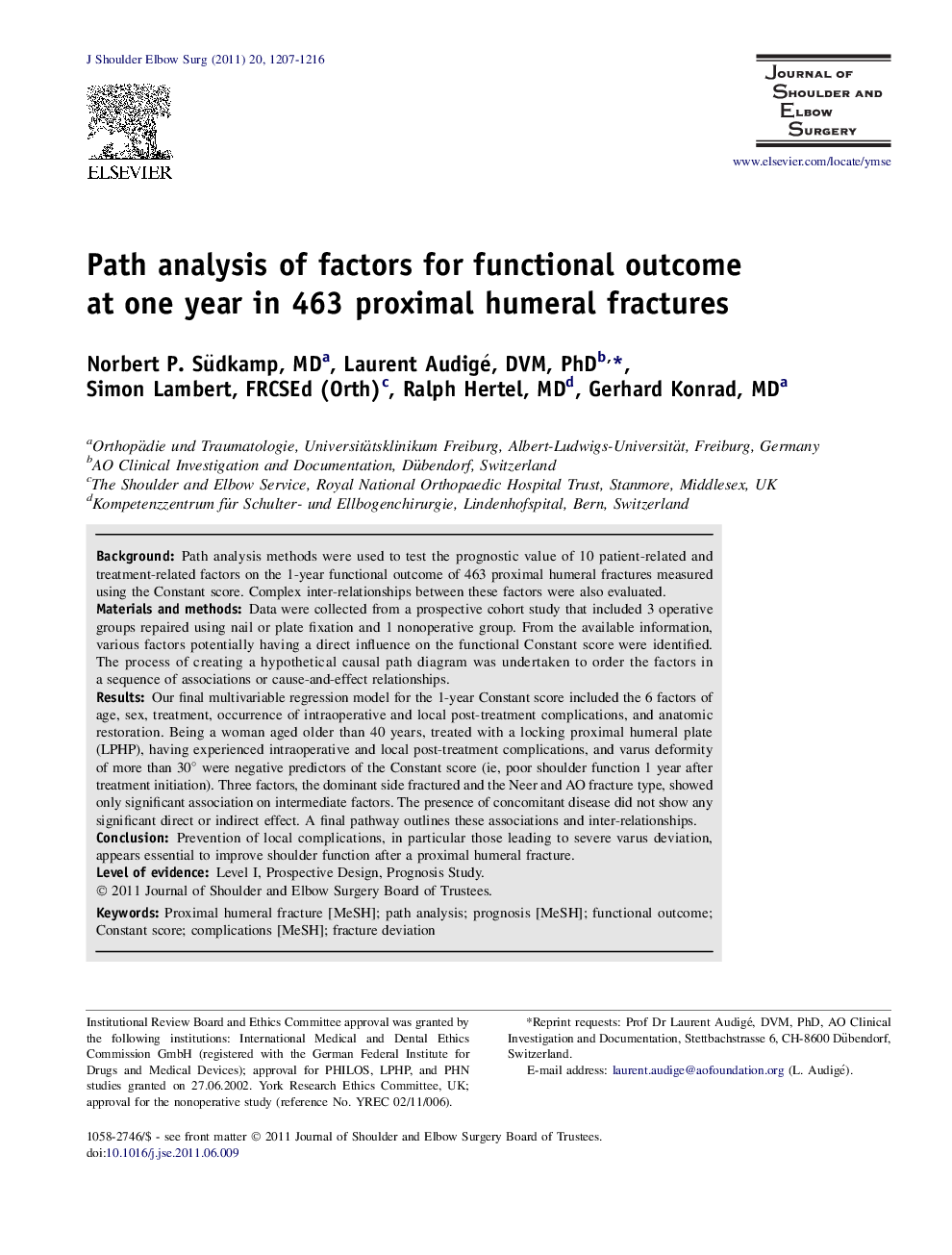| کد مقاله | کد نشریه | سال انتشار | مقاله انگلیسی | نسخه تمام متن |
|---|---|---|---|---|
| 4075669 | 1604680 | 2011 | 10 صفحه PDF | دانلود رایگان |

BackgroundPath analysis methods were used to test the prognostic value of 10 patient-related and treatment-related factors on the 1-year functional outcome of 463 proximal humeral fractures measured using the Constant score. Complex inter-relationships between these factors were also evaluated.Materials and methodsData were collected from a prospective cohort study that included 3 operative groups repaired using nail or plate fixation and 1 nonoperative group. From the available information, various factors potentially having a direct influence on the functional Constant score were identified. The process of creating a hypothetical causal path diagram was undertaken to order the factors in a sequence of associations or cause-and-effect relationships.ResultsOur final multivariable regression model for the 1-year Constant score included the 6 factors of age, sex, treatment, occurrence of intraoperative and local post-treatment complications, and anatomic restoration. Being a woman aged older than 40 years, treated with a locking proximal humeral plate (LPHP), having experienced intraoperative and local post-treatment complications, and varus deformity of more than 30° were negative predictors of the Constant score (ie, poor shoulder function 1 year after treatment initiation). Three factors, the dominant side fractured and the Neer and AO fracture type, showed only significant association on intermediate factors. The presence of concomitant disease did not show any significant direct or indirect effect. A final pathway outlines these associations and inter-relationships.ConclusionPrevention of local complications, in particular those leading to severe varus deviation, appears essential to improve shoulder function after a proximal humeral fracture.
Journal: Journal of Shoulder and Elbow Surgery - Volume 20, Issue 8, December 2011, Pages 1207–1216